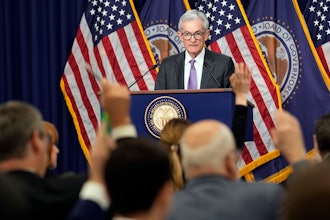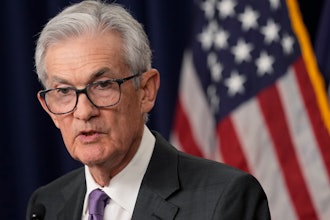
 First quarter trade data from 2015 show the United States and China continue to go in opposite directions, according to an analysis from the MAPI Foundation, the research affiliate of the Manufacturers Alliance for Productivity and Innovation.
First quarter trade data from 2015 show the United States and China continue to go in opposite directions, according to an analysis from the MAPI Foundation, the research affiliate of the Manufacturers Alliance for Productivity and Innovation.
In the report, Ernest Preeg, Ph.D., MAPI Foundation senior advisor for international trade and finance, notes that U.S. manufactured exports decreased by 2 percent, to $282 billion, in the first quarter as compared with 2014. Alarmingly, the U.S. deficit in manufactures rose by $33 billion, or 30 percent, compared with the first quarter of 2014. This follows a 14 percent increase in the overall trade deficit in the fourth quarter of 2014.
Conversely, Chinese exports were up 5 percent, to $490 billion, in the first quarter on a year-over-year basis. China's trade surplus increased by $45 billion in the first quarter over 2014, or by 24 percent, and follows a 14 percent rise in the fourth quarter of 2014.
“China has been pursuing an export-led, technology-oriented economic strategy that has resulted in a fundamental restructuring of Chinese exports from labor-intensive to technology-intensive industries, with Chinese firms shifting labor-intensive production to low-wage Southeast Asian nations, such as Bangladesh, Vietnam, and Myanmar,” Preeg wrote.
Preeg estimates that the increase in the first quarter U.S. deficit equates to a loss of 230,000 jobs in the manufacturing sector.
For the 10 largest high-technology export industries, Chinese exports in the first quarter were $254 billion, or 37 percent larger than the $185 billion of U.S. exports, and were in surplus by $82 billion compared with a $70 billion U.S. deficit.
The new data continue the drumbeat of a downward trade outlook.
“The immediate course ahead in 2015 for U.S. trade in manufactures is grim, in part from the adverse effects of the stronger dollar on price-sensitive manufactures, and in part from mercantilist policies by others, mostly in Asia,” Preeg noted.
"In response, the United States and like-minded trading partners need an integrated trade and exchange rate strategy to restore a balanced, multilateral system of trade, which will require strong and sustained U.S. leadership," he concluded.























